When it comes to versatility, it is hard to beat the Air Force Special Operations Command (AFSOC). "We are the Air Force's only ground combat force," says Capt. Mike Martin, chief of current operations for AFSOC's 720th Special Tactics Group (STG). "There are some base ground defense units, but we go forward." For the members of this elite combat team, going forward means swimming with the Navy's SEALs, jumping with the Army's Special Forces and Rangers, and hitting the beaches with the Marines' Force Recon. And then their real work begins. The job of AFSOC "operators" is to quickly turn a patch of hostile terrain into a fully functional airfield. Sometimes this means a stealthy attack by motorcycle and ATV. Other times it means cleaning out hostile forces by scouting locations for the delivery of 15,000-pound BLU-82 Daisy Cutter bombs.
Military action in Afghanistan brought AFSOC's unusual capabilities into the forefront in the war on terrorism. During the closing months of 2001, AFSOC Special Tactics (ST) combat controllers were the critical element in the surgically precise airstrikes in Afghanistan. Using systems like the Special Operations Forces Laser Marker (SOFLAM)--at left, which creates the spot that laser-guided bombs aim for--team members precisely marked terrorist locations for destruction. Despite their highly visible success, this elite force remained little known to those outside the military. When POPULAR MECHANICS inquired how the Air Force trained these elite troops, we were invited to take a closer look for ourselves by observing them in action at their headquarters, at Special Operations Command at Hurlburt Field, Fla.
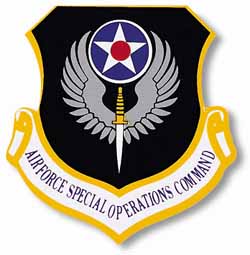
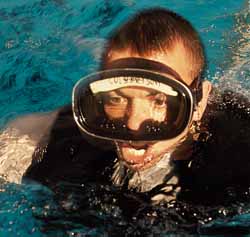 Cryptic military terms convey only the slightest hint of what this unit is really about. In the chain of command, AFSOC is the Air Force component of the U.S. Special Operations Command. There are 19 AFSOC Special Tactics units, called "flights." Each flight consists of 18 men, called operators, who are trained in combat control, pararescue or weather forecasting. Five of the 19 flights are on continuous worldwide alert every hour of the day, every day of the year. As detailed as their assignments may seem, they omit one essential fact. To get to work, ST operators must be highly skilled in parachuting and underwater and amphibious operations along with small-unit combat tactics.
Cryptic military terms convey only the slightest hint of what this unit is really about. In the chain of command, AFSOC is the Air Force component of the U.S. Special Operations Command. There are 19 AFSOC Special Tactics units, called "flights." Each flight consists of 18 men, called operators, who are trained in combat control, pararescue or weather forecasting. Five of the 19 flights are on continuous worldwide alert every hour of the day, every day of the year. As detailed as their assignments may seem, they omit one essential fact. To get to work, ST operators must be highly skilled in parachuting and underwater and amphibious operations along with small-unit combat tactics.
 There is no easy way to join the ranks of AFSOC. But one of the best routes into this Air Force unit is to first join the Army, Navy or Marines and distinguish yourself as a Ranger, SEAL or member of Force Recon.
There is no easy way to join the ranks of AFSOC. But one of the best routes into this Air Force unit is to first join the Army, Navy or Marines and distinguish yourself as a Ranger, SEAL or member of Force Recon.
"When you look at the special operations force skills that we possess, it includes all the characteristics and attributes possessed by our counterparts: Navy SEALs, Army Rangers, Army Special Forces and Marine Corps Force Recon. And the reason is so that we can seamlessly operate with those units on the battlefield," says Capt. Chris Larkin, acting commander for the 720th's 23rd Special Tactics Squadron and supervisor for ST Advanced Skills Training.
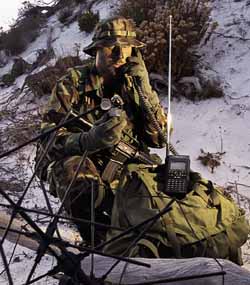
Specialized training and precision locating equipment paid off in Afghanistan where the United States was able to precisely target a Taliban ammunition dump.
"I had worked with the Combat Control Teams previously, when I was in the Ranger battalion, and I had seen what they were doing and who they worked with--SEALs, Special Forces. It wasn't just a straightforward job," Daniel says. "It was really diversified. And that's why I crossed over."
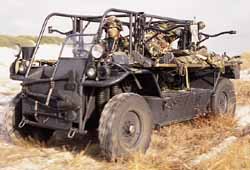
Based on the design of a dune buggy, the RATT is the world's most advanced combat medical evacuation vehicle.
AFSOC Combat Control Team (CCT) training takes more than 18 months of grueling work, as trainees learn the requisite basic and advanced special operations skills. Physical, mental and emotional toughness are the basic requirements. What Air Force training turns out is guys--no women are permitted in ST units--who can think two steps ahead of the game, while they fight off someone who is trying very hard to kill them.
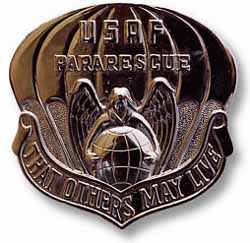 We watch this philosophy in action at a swimming pool where a small group of ST students are receiving "pre-scuba" instruction during the 60-day Water Phase of the training. Today's lesson is "buddy breathing" on a single snorkel. It is normally not a hard task to master. The ST twist is to simulate the physical and mental challenges of a real combat situation. A mountainous Air Force instructor adds this extra note of realism by joining the trainees in the pool, where he proceeds to climb on their backs, yank off their masks, hold their heads underwater and try to block their airways.
We watch this philosophy in action at a swimming pool where a small group of ST students are receiving "pre-scuba" instruction during the 60-day Water Phase of the training. Today's lesson is "buddy breathing" on a single snorkel. It is normally not a hard task to master. The ST twist is to simulate the physical and mental challenges of a real combat situation. A mountainous Air Force instructor adds this extra note of realism by joining the trainees in the pool, where he proceeds to climb on their backs, yank off their masks, hold their heads underwater and try to block their airways.
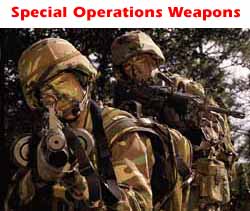
AFSOC operators use the most powerful small arms in the Special Forces arsenal.

Remington 870, 12-ga.
As an austere expeditionary advance force, ST combat controllers also must have the capability to establish a remote airfield. They do this using equipment ranging from a Nikon Total Station survey set that can quickly lay out a landing strip to pocket-size landing lights.

M4A1 with M203, 5.56mm
Increasingly important in the era of Unmanned Aerial Vehicles and GPS-guided smart bombs are AFSOC's weather forecasting tools. The 720th's 10th Combat Weather Squadron, which includes detachments throughout the special operations community, is equipped with the Kestrel 4000 handheld station and the new Remote Miniature Weather Station.
 M249 SAW, 5.56mm
M249 SAW, 5.56mm
AFSOC operators need to move fast. In addition to small boats such as the Zodiac F470 series Combat Rubber Raiding Craft, ST personnel use a combination of motorcycles, "quad" all-terrain vehicles, and tactical wheeled vehicles. Included in that arsenal is the GRC-206 Mobile Communications Vehicle, an Air Force Humvee equipped with a sophisticated package of communications hardware.
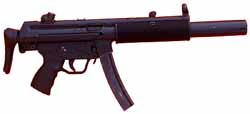
MP5, 9mm
Perhaps the most unusual piece of AFSOC wheeled gear is the Rescue All Terrain Transport (RATT). Derived in the early 1990s from a commercial dune buggy design, RATTs support pararescue missions by providing highly mobile battlefield trauma care. Each RATT carries a driver and two pararescue personnel. Six stretchers fold out to carry the wounded to an aid or evacuation station.
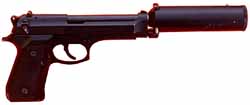
M9 Pistol with Suppressor
0
0
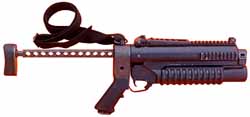
M203, 40mm Stand-Alone
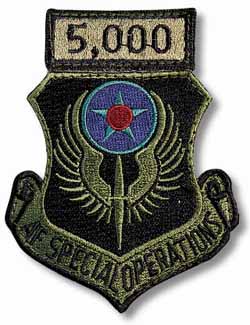
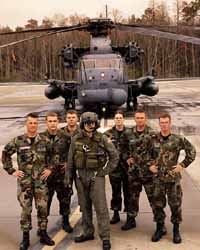
Behind AFSOC pilots are teams of maintainers, including both men and women, who keep the aircraft and weapons in fighting condition.
The squadron is in the process of converting most of its fleet of MH-53 "J" Models to the latest "M" designator. However, current plans have the squadron replacing some of these helicopters with the Air Force Special Operations tilt-rotor CV-22. Air Force planners project initial operational capability for the first six CV-22s at Hurlburt Field sometime in 2008.
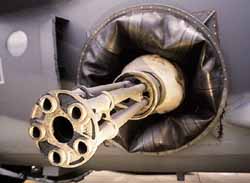
AFSOC gunships lay down a virutal wall of metal that can neutralize any ground troops.
Slightly more precise but equally devastating firepower is delivered by the 16th Wing's AC-130 gunships. The Wing has two models: the AC-130H "Spectre" flown by the 16th SOS and the AC-130U "Spooky" flown by the 4th SOS. With a sobering array of direct-fire weapons protruding from their left side, the gunships circle a target area, delivering overwhelming amounts of fire with television-targeted and computer-guided accuracy.

On board one of the 4th SOS's "U" models, we notice that this newer version differs from the "H" model in being pressurized and in supplementing the earlier configuration's 105mm howitzer and 40mm cannon with an additional five-barrel 25mm Gatling gun. The weapon combination represents a mind-numbing lethality.
Rounding out the AFSOC air assets are the MC-130P Combat Shadow and the EC-130 Commando Solo. The Combat Shadow penetrates hostile lines to provide midair refueling for special operations helicopters, while the Commando Solo provides a sky-based radio and television station for psychological operations and civil affairs messages.
As the inside story of the war in Afghanistan begins to unfold in the months ahead, AFSOC will undoubtedly emerge as a pivotal reason for the United States' success. The array of advanced weapons that ST teams bring to the battlefield are only part of the story. The extraordinary men, distinguished by both their skill and their attitude, are the backbone of this unique force. "They're really just ordinary people," says AFSOC's Command Chief Master Sergeant Bob Martens, "but they're doing extraordinary things, day in and day out."